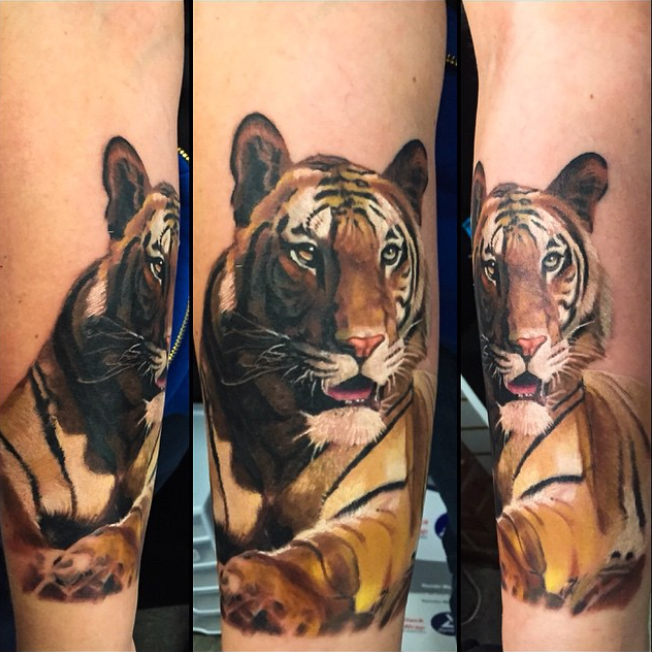Realistic art is among the most common styles regardless of medium. There are several different variations depending on the subject matter, artist execution

and other factors. Realism art is incredibly popular in tattoos, especially sentimental/memorial pieces. Through realism, artists are able to create work that looks just like photographs or work that can be mistaken for photographs.
Photo-Realism Tattoos
Photo-realism tattoos are exactly what the name would suggest – tattoos that look just like photos. Unlike other art styles, realism typically discourages imaginative or creative flair. The goal is to
essentially duplicate a real life scene or element as closely as possible. Realism tattoos in any degree require a tremendous amount of practice and patience. The artist must be incredibly precise in order to create successful tattoos. The possibilities for subject matter are endless – whether it’s a scene from a live action movie, a landscape or place, celebrity portraits, animal portraits….. The list goes on! Here at Creative Ink, Cesar specializes in photo-realism work. His portfolio has a wide range of subject matter. Most frequently, he can be found creating family portraits, pet portraits or memorial tattoos.
Hyper-Realism Tattoos

Hyper-realistic tattoos are quite similar to photo-realism. The key difference being that hyper-realistic art could be mistaken for a photo, where as photo-realism simply recreates a photo. Hyper-realism is a very quickly growing style trend in the tattoo industry. This style has a knack for tricking the mind into seeing tattoos 3-dimensionally. Previously, in the early days of modern tattooing, artists were not equipped with very adequate tools. Artists often had to make their own tools as well as their techniques. Back then, even ink colors were incredibly limited. Creating realism tattoos of any sort back then was virtually unheard of. Now a days, however, artists have much more sophisticated equipment and methods. This has opened a flood gate for tattoo styles that would have been impossible in the past.


You must be logged in to post a comment.